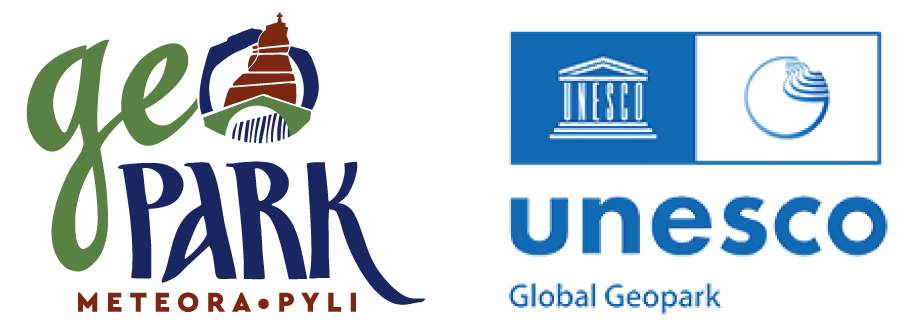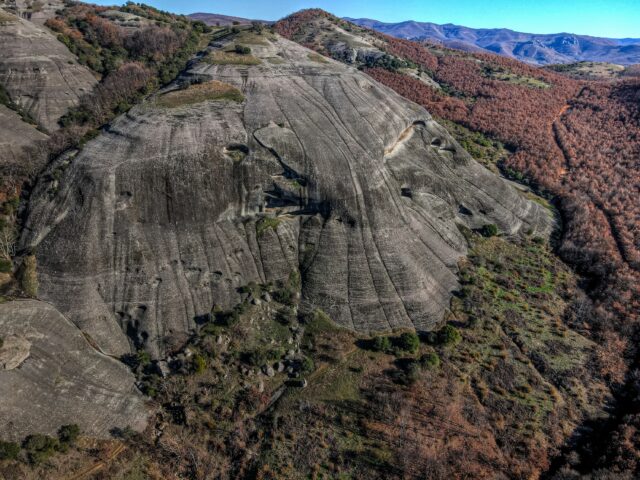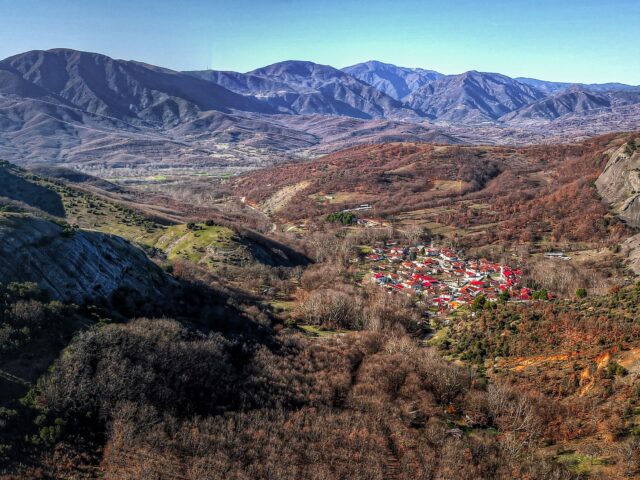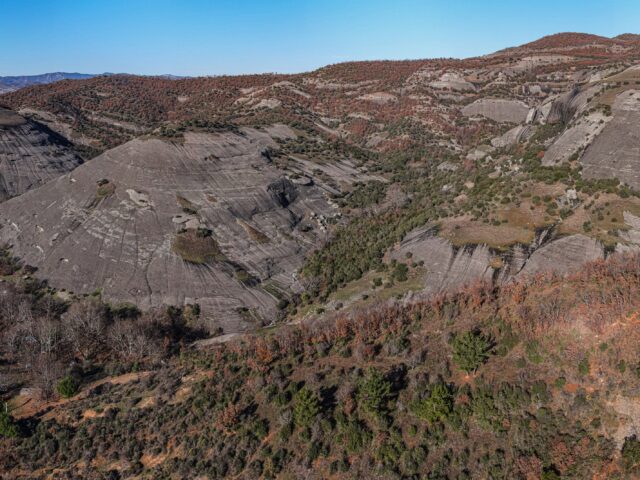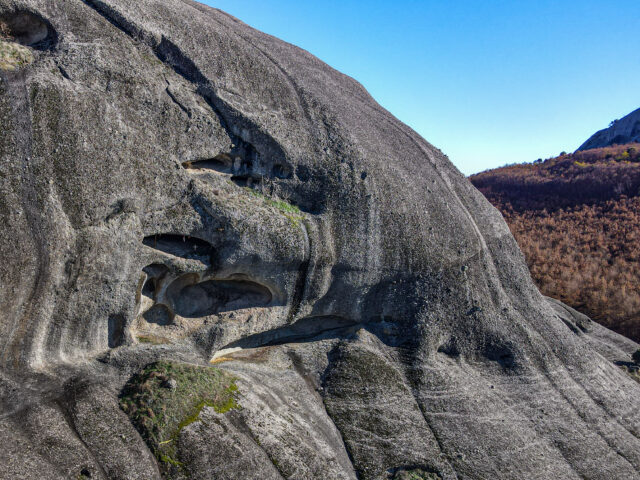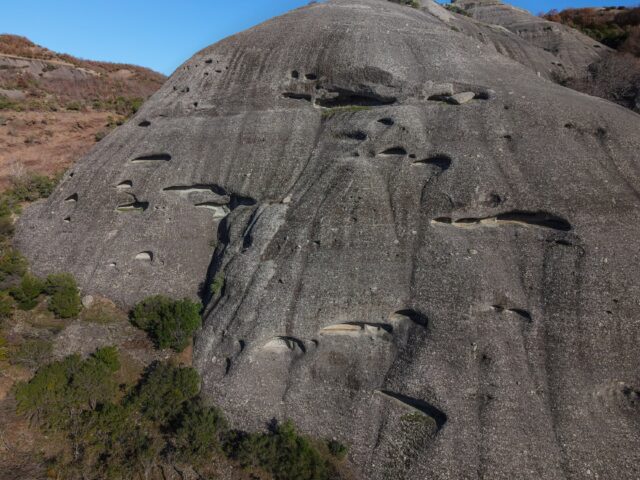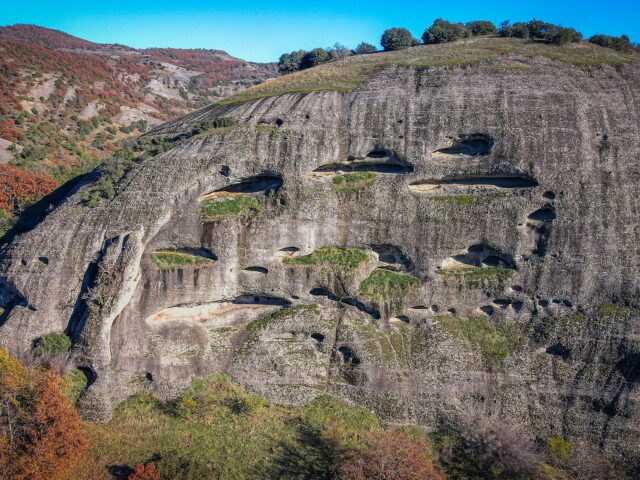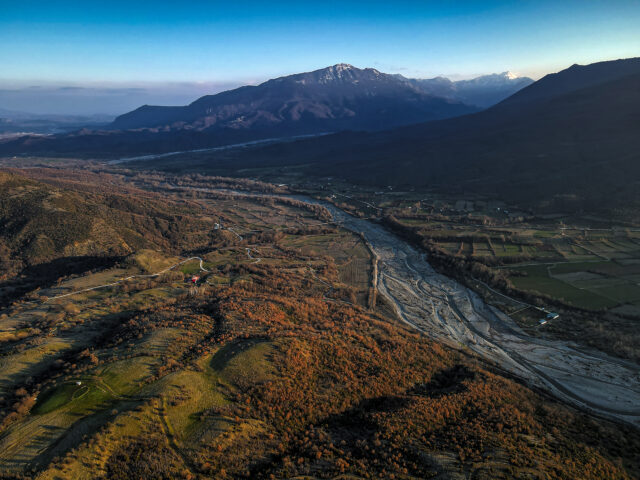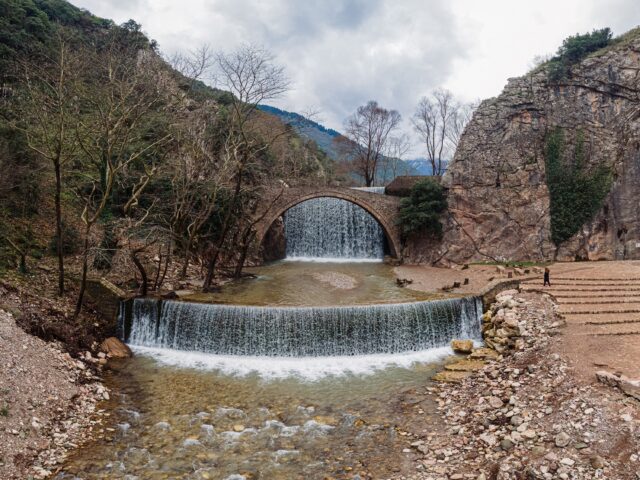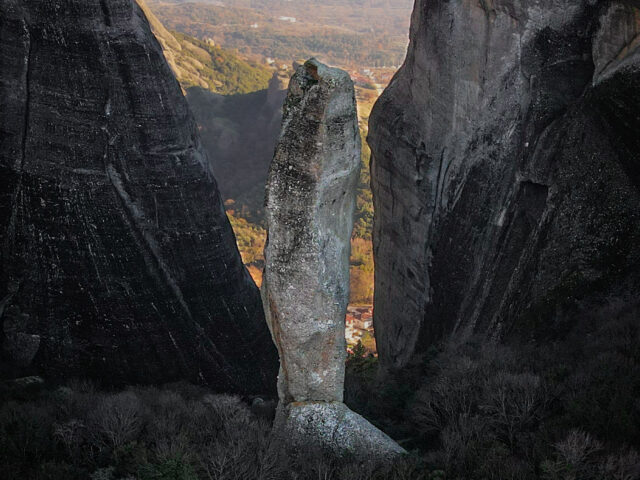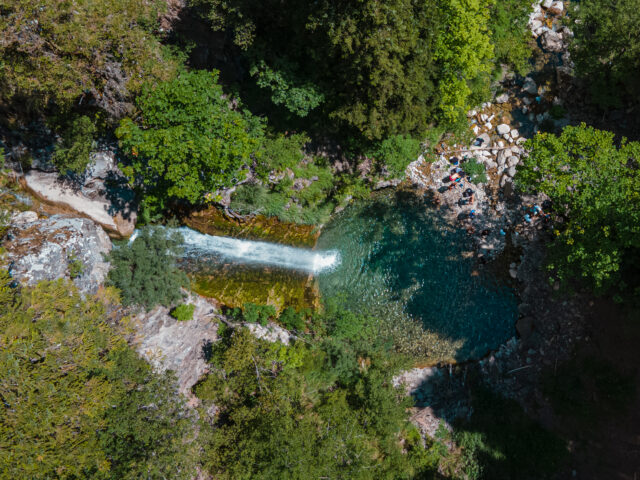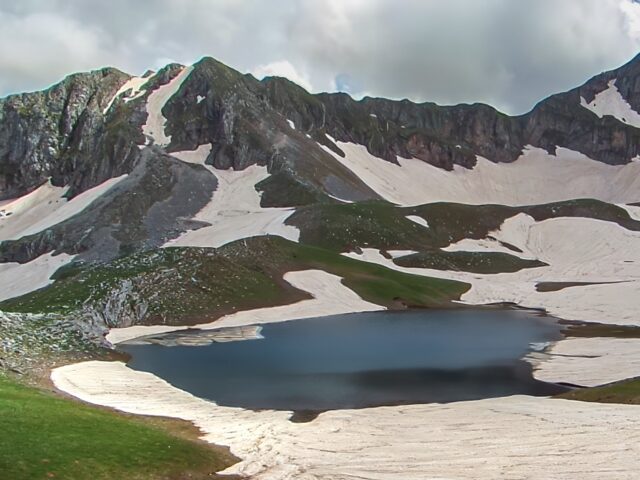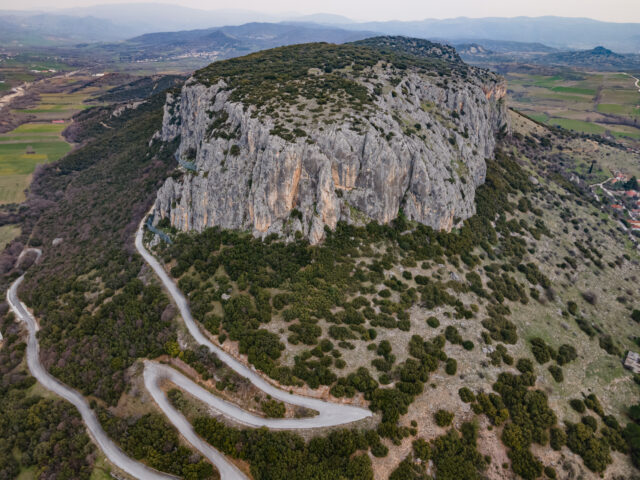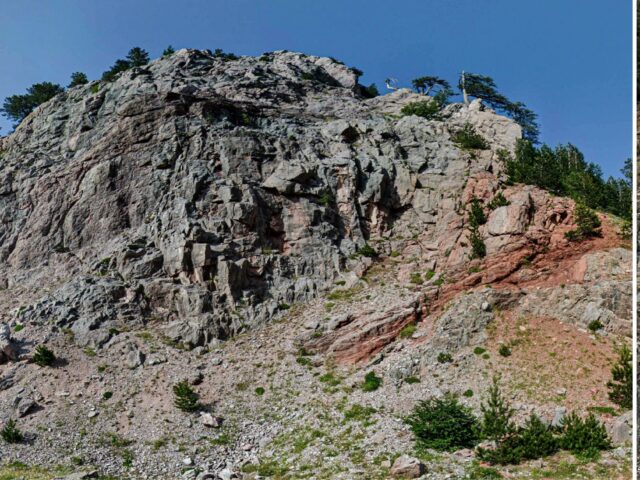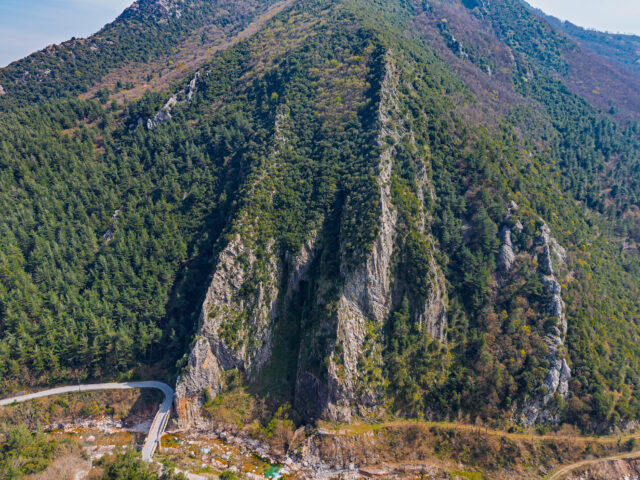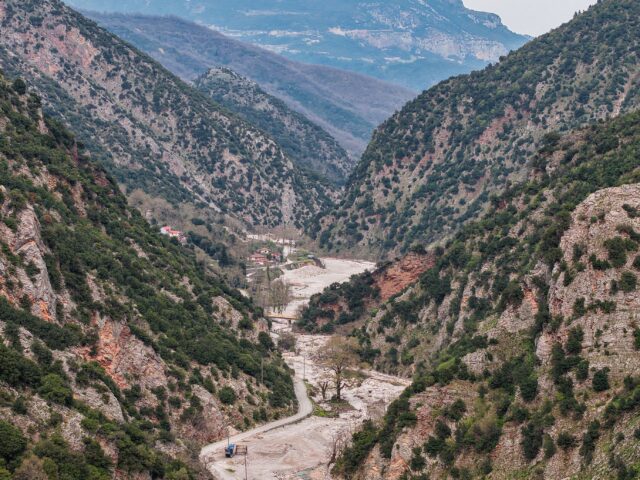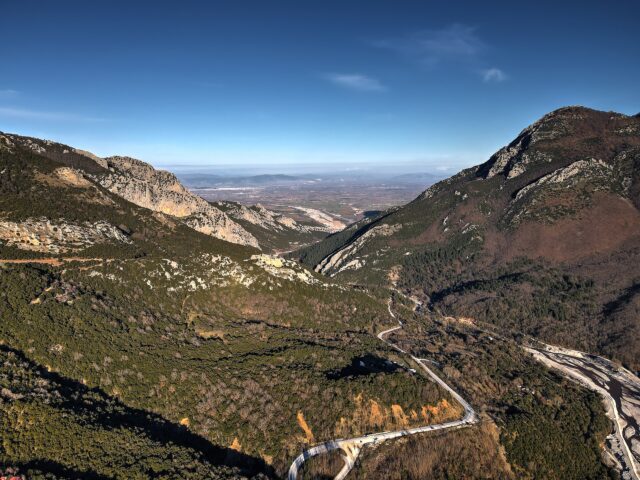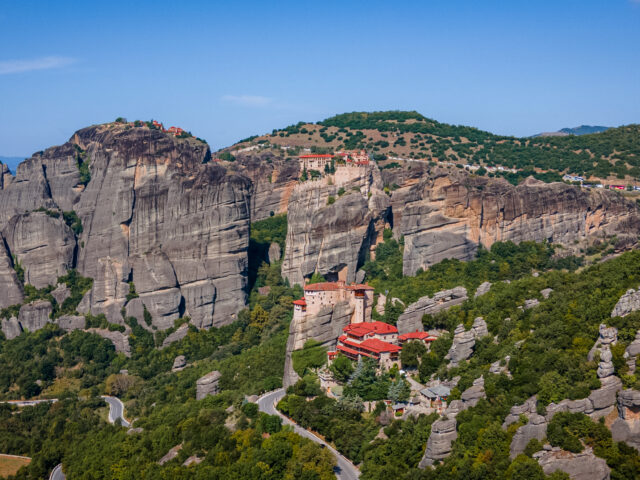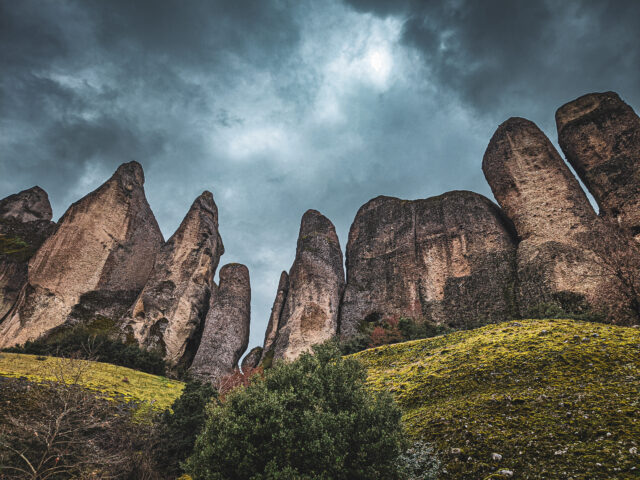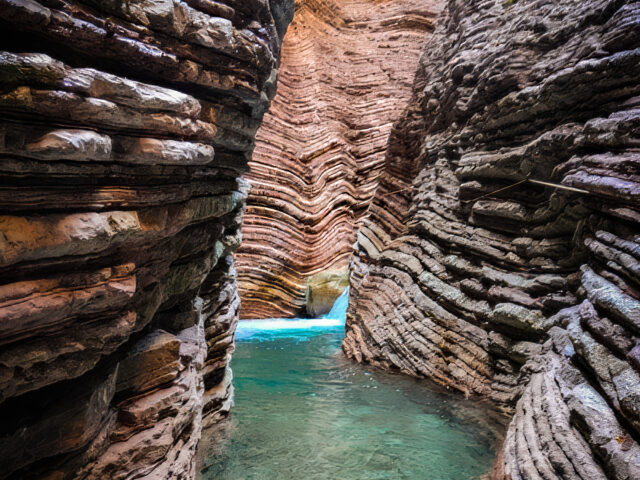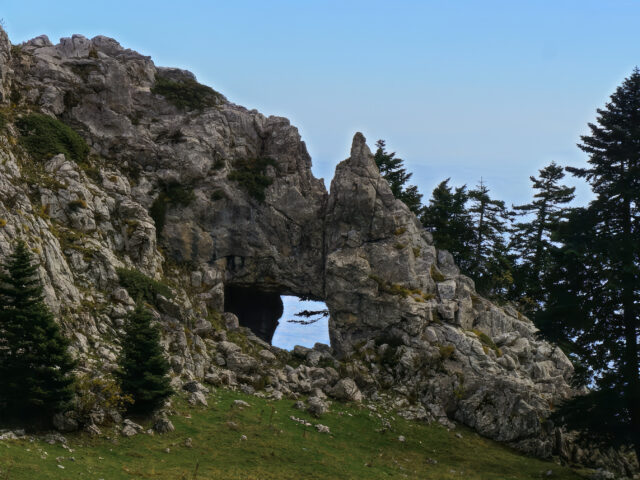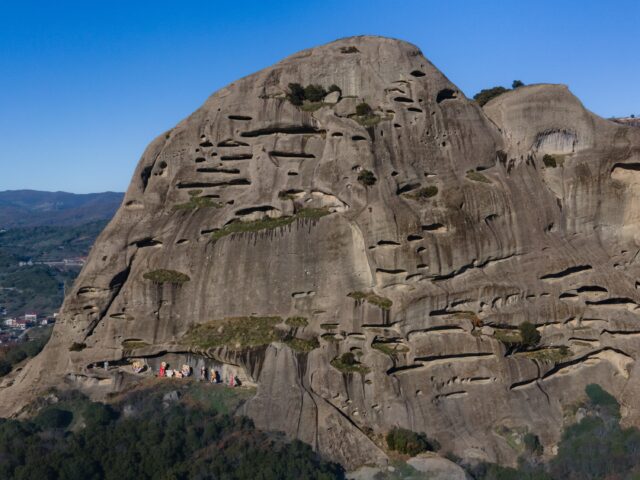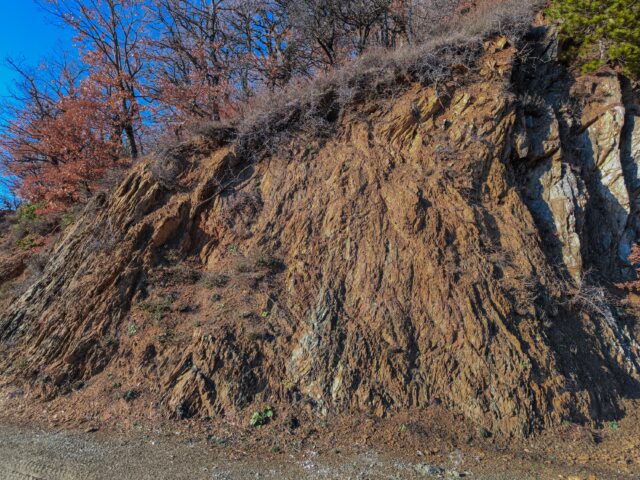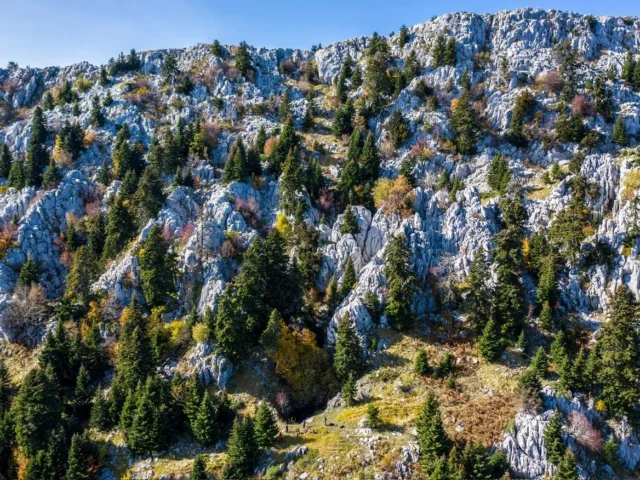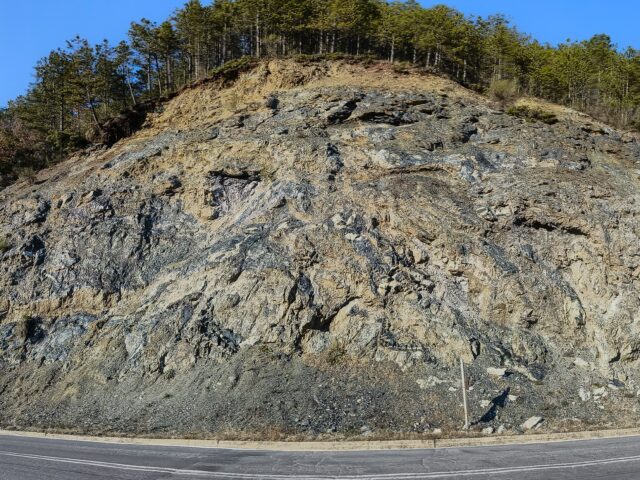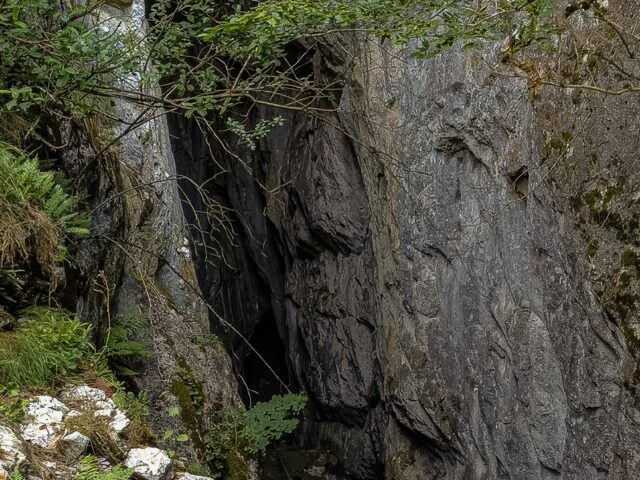Agios Dimitrios Landforms & Tafoni
Address
Agios Dimitrios 422 00
GPS
39.778966252525, 21.550214381151
The characteristic rock formations of Agios Dimitrios, Kalambaka, are a continuation of the Meteora complex to the north. On the surface of the rocky outcrops of Agios Dimitrios, erosion processes have created large or small cavities called “tafoni”. The rock outcrops of cohesive conglomerates and sandstones of the Meteora Conglomerate Unit were deposited as submarine drifts and belong to the Meso-Hellenic Trench as part of the Pentalofos-Meteora Formation of Upper Oligocene – Lower Miocene age (10-30 million years). Tafoni are cellular weathering structures due to the selective erosion of conglomerates by the action of wind and water. Similar tafoni structures can be seen in the rocks of Meteora and in other occurrences of similar rock formations such as in Gavros and Sarakina.
From a geological point of view, the rocks of the wider Meteora area (Kalampaka, Gavros, Agios Dimitrios, etc.) are composed of molassic sediments belonging to the MesoHellenic Trench, a huge sea basin that started from the geographical area of present-day Thessaly and reached as far as present-day Albania. It was at least 200 kilometers long and 30-40 kilometers wide. On either side of this narrow sea basin emerged mountain ranges that are identical to today’s morphology. To the west is the Pindos mountain range and to the east are the mountains Vermio, Askio, Vourinos and Vouniasa. The large rivers that flowed into this sea eroded the above mountain ranges, transporting and depositing large quantities of materials for millions of years. The MesoHellenic Trench includes the geological formations of Tsotyli, Pentalofos-Meteora, Eptachori and Krania-Rizomatos that appear in the Geopark. The rocks of Meteora consist of the Meteora Conglomerates, a series of cohesive conglomerates and sandstone layers, part of the Pentalofos-Meteora Formation of Upper Oligocene-Lower Miocene age (10-30 million years). The Pentalofos-Meteora Formation can be seen in the Meteora-Pyli Geopark from the northern limits of the park with the prefecture of Grevena to Sarakina and Peristera in the south. The Meteora Conglomerates are Gilbert-type deltaic deposits. Gilbert-type deltaic deposits are also found in large areas in the northern part of the Peloponnese (age >5 million years) and are currently deposited underwater in the Gulf of Corinth (mouths of Selenitis, Vouraikos River, etc.). The cohesive conglomerates and sandstones (turbidites) were deposited 10-20 million years ago underwater, at the mouths of large rivers from the northernmost part of the Meso-Hellenic Trench. The cobbles and gravels that we see today in the conglomerates of Meteora consist of metamorphosed, granitic and carbonate rocks, and were transported by rivers from the mountains that surrounded the Meso-Hellenic Trench.
Tafoni as geomorphs are found in geological formations of different composition, with different mechanisms of genesis such as chemical erosion, weathering, etc. In the Meteora conglomerates, their appearance is mainly horizontal, as they follow the layering of the formations. In some rocks we can also see large vertical tafoni. They develop mainly on the slopes of rocks with a south orientation, due to the greater influence of solar radiation and atmospheric conditions, something that has been observed worldwide. The layering of conglomerates and sandstones. Vertical cracks and faults fragment the rocks of the Meteora Conglomerates and allow the circulation of water inside. At the same time, exposure to atmospheric conditions leads to differential erosion of the softer layers, with the gradual creation of ever larger tafoni cavities. The tafoni also grow larger by the lateral joining of smaller cavities. The large cavities of some tafoni in the form of rock shelters led to their exploitation by monks, as they were suitable for habitation and the creation of hermitages and cells, while at the same time offering security due to the difficulty of access. The large cavities of some tafoni in the form of rock shelters led to their exploitation by monks, as they were suitable for habitation and the creation of hermitages and cells, while at the same time offering security due to the difficulty of access.
The relief of the area is suitable for hiking and climbing activities on the rocks surrounding the village of Agios Dimitrios. West of the entrance to the village we find the chapel of Agia Marina. To the east and a short distance from the village, is the park and chapel of The Mother of God of the Life-giving Spring (Zoodochos Pigi), opposite the rock “Mantilia” (“Handkerchiefs”). The “Hanging of the Handkerchiefs” takes place there every year, where climbers climb to the ruins of monastery of Mother of God of the Life-giving Spring and change the handkerchiefs that had been hung there in a recess, as vows to the Virgin Mary.
